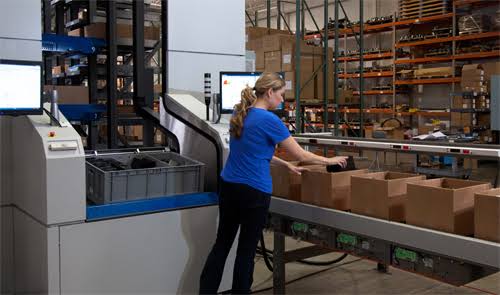Technology is changing the world faster than ever. From the way we shop to the way we work, automated systems powered by sensors, cloud platforms, and AI are now becoming a normal part of everyday life. These systems are not just replacing manual tasks—they are helping businesses operate more efficiently, offering users more convenience, and creating entirely new digital experiences. As automation continues to evolve, its impact is becoming visible across multiple industries, pushing the world toward a smarter, more connected future.
The New Age of Intelligent Devices
Today’s smart machines are far more advanced than the automated tools of the past. They combine software, hardware, and real-time data processing to deliver fast and precise performance. Modern devices can adapt to situations, respond to the environment, communicate with cloud servers, and make decisions based on input data.
For example, IoT-enabled devices now use sensors to monitor temperature, motion, pressure, or user preferences. These sensors allow machines to work automatically—turning off lights, unlocking doors, managing inventory, or even predicting when maintenance is needed. This level of automation is what sets today’s devices apart and allows them to support industries in new and innovative ways.
Automation in Consumer Environments
Smart automation has significantly changed how consumers interact with services. Self-checkout counters, digital kiosks, and touch-free payment systems are now common. They reduce waiting times and improve user experience by making transactions faster and more convenient.
A great example of this transformation can be seen in fitness spaces where modern machines help support users with instant access to essential items. Many gyms have introduced automated product dispensing systems that operate 24/7. These systems offer protein bars, supplements, and hydration drinks instantly, improving convenience for fitness enthusiasts.
Data-Driven Efficiency for Businesses
One of the biggest advantages of smart technology is the enormous amount of data it can generate and analyze. Every interaction, every product selection, and every sensor reading can be used to improve operations.
Businesses can use this data to track consumer behavior, identify demand patterns, monitor sales in real time, and manage inventory automatically. This helps companies reduce waste, avoid stock shortages, and plan supplies more accurately. Furthermore, cloud-based dashboards allow teams to monitor performance from anywhere, giving them better control and insights.
AI and machine learning also support these systems by predicting future trends and automating decisions such as restocking schedules and maintenance alerts. This data-driven approach is transforming how companies plan, operate, and grow.
Smart Automation in Public Services
Industries such as healthcare, transportation, and education are increasingly adopting advanced automation. Hospitals now use smart machines for contactless check-ins, medicine dispensing, and remote monitoring. Schools use digital attendance systems and automated administrative tools. Public transport systems rely on sensors and live tracking to optimize routes and reduce congestion.
These examples show how technology is not limited to commercial businesses—it is improving the efficiency of public service systems and making life easier for millions of people.
Customized Technology for Specific Needs
Although many industries use standard technology, there is a growing demand for highly personalized solutions. Businesses want machines and devices that match their exact needs. This demand has led to the growth of custom vending machine development, where companies create unique automated systems designed around specific products, services, or environments.
Custom solutions allow businesses to integrate advanced software, specialized dispensing mechanisms, unique product storage requirements, and full IoT connectivity. They can also add cashless payments, facial recognition, mobile-app control, or remote monitoring. This level of customization ensures that businesses get machines perfectly aligned with their brand, workflow, and customer expectations.
AI and Robotics: The Future of Automation
Artificial intelligence is pushing automation to a new level. Robots can now move, navigate, and interact with environments using AI-powered vision systems. These robots can perform tasks such as sorting, packaging, cleaning, and even assisting customers in stores.
AI-driven chat interfaces and voice assistants also allow machines to communicate with users more naturally. Instead of pressing buttons, customers can simply speak commands or use mobile devices to control automated systems. This makes interactions smoother and more user-friendly.
A Smarter Tomorrow
As technology continues to evolve, intelligent automation will become a core part of daily life. From smart homes to advanced industrial systems, automation will continue to redefine convenience, efficiency, and productivity.
Businesses that adopt automated tools early will gain a strong advantage—lower costs, better customer experience, and faster operations. Meanwhile, users will enjoy more seamless interactions, personalized services, and quicker access to the things they need.
The future will be shaped by machines that understand, learn, and adapt. And as long as innovation continues, the world will only become smarter, more connected, and more efficient.








Leave a Reply